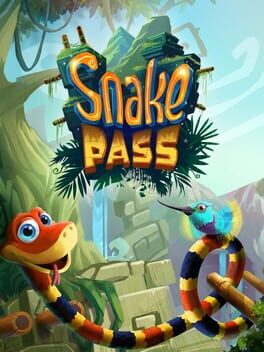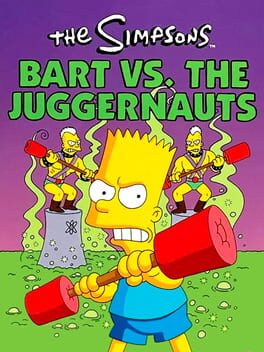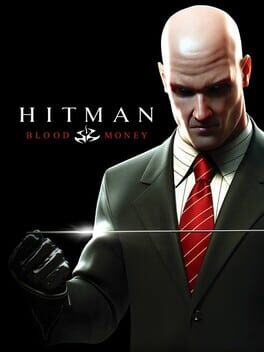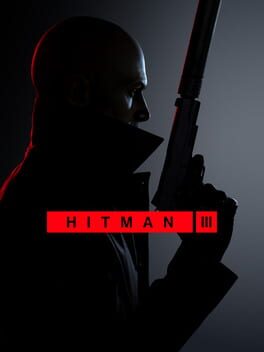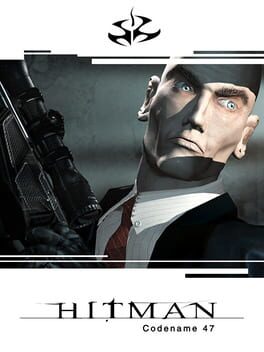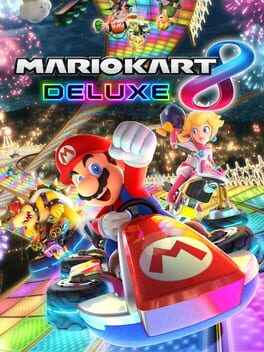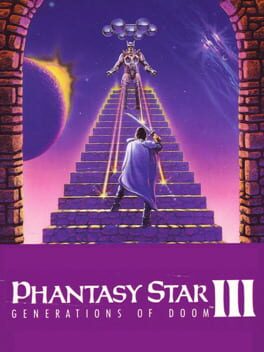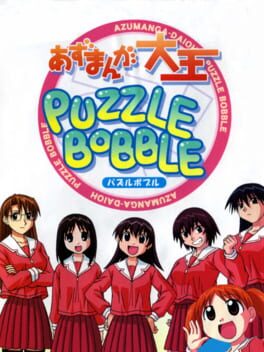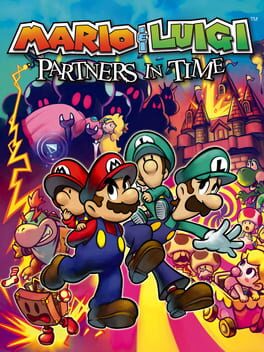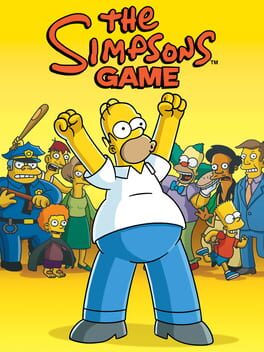nf6429
365 Reviews liked by nf6429
Snake Pass
2017
Looking back in recent memory, I can’t think of a single year that’s more stacked with incredible games than 2017. It felt like both indies and triple A developers were pumping out hit after hit: Breath of the Wild, Cuphead, Nier Automata, Nex Machina, Sonic Mania… we could go on and on. As excited as I was for all of these titles however, there was something even bigger on my mind: the revival of the 3D platformer, my childhood genre. 2017 absolutely delivered in spades, with some instant favorites (A Hat in Time), some flawed yet interesting gems (Skylar & Plux), some daunting reinventions that I played a bit of and didn’t finish for some reason or another (Super Mario Odyssey), and some of the 3D platformers of all time (Yooka Laylee).
In the midst of all of this chaos, was Snake Pass. I’d been following the game from its inception to launch day, and bought it without a second thought at the end of March. You play as a cute happy snake named Noodle slithering your way through abandoned yet breathtaking ruins in the wilderness accompanied by a David Wise soundtrack (which by the way, is probably his most overlooked contribution, please give it some love); how the hell could I possibly dislike this? Yet, I found myself getting filtered within a few days; Noodle just felt a bit too sluggish on the ground, and I couldn’t figure out why I kept slipping and falling from the dangling bamboo poles, constantly respawning and losing all my collectible progress because it wasn’t saved until I manually touched checkpoints. So, I shelved it unceremoniously, and wouldn’t pick it back up until many years later.
Let it be known; 2017 me was an idiot. Snake Pass slaps.
The world wasn’t ready for Snake Pass. I wasn’t ready for Snake Pass. I came in expecting a classic 3D platformer collectathon, with tons of jumping, climbing, and grabbing. I was ready for some combat here and there via tons of scattered minions and flashy boss fights, and of course, was mentally prepared for plenty of gimmick levels in the form of vehicle sections, card/fishing minigames, and maybe a turret or twinstick shooter or two. As is, I think we’ve just taken for granted how formulaic much of the genre has become from its predecessors, and that’s totally fine considering the nostalgia that’s baked into these projects.
What I got instead, was a deconstruction of every convention of the genre as we know it. There’s no “jump” button, because you’re a goddamn snake. Instead, you must rely on three basic forms of movement to cling and glide through various floating isles of peril, filled with spike traps, smoldering coals, illuminative pools, and tons of harrowing gaps of thin air itself. The analog stick controls your head on a horizontal axis relative to the camera (think: moving left and right), the A button tilts Noodle’s head up (while it naturally slumps down due to gravity), and the right trigger moves Noodle forward. The controls are deceptively simple to pick up, but quite difficult to master, and successfully navigating and climbing your way through the separated platform obstacle courses while picking up every collectible and utilizing Noodle’s body to the fullest extent is one hell of a challenge that no other game has ever attempted, much less pulled off.
One of the game’s most well known mottos is “think like a snake;” that is, you can’t approach Snake Pass the same way that you’d approach your classic humanoid mascot 3D platformer. Noodle’s body behind the controllable head is both your greatest strength, and your greatest weakness. See, the body actually consists of 35 connected sphere segments much more similarly to that of a real snake, and the game constantly checks to see if these spheres are in contact with a surface or one another. That’s why the classic S shape slither and curviness of the snake’s body is crucial for maintaining speed. It then follows that as this giant interconnected body, if the head moves in one direction, the body will naturally follow too. As such, the body and the head must be considered in tandem to both move Noodle along platforms/structures and anchor Noodle to contraptions so he doesn’t fall off. The possibilities that stem from this are endless; you can dangle the tail from a rotating pole to collect wisps, you could use your tail to propel Noodle up onto a wall and “slither up,” you could wrap Noodle’s tail around a stationary pole and then slowly extend the head and wrap that head around another pole to complete the transfer, and so much more.
Let me put this all in context with an example to better demonstrate the creativity that Snake Pass’s physics and controls allow for. Consider the following segment made up of a wind tunnel and a bamboo awning in front of the wind tunnel, with the wind currents flowing in the direction towards the bamboo awning. The goal here is to collect the red keystone (one of three) to unlock the portal, but of course, it’s no easy task considering the wind will quickly destabilize Noodle and blow him into the abyss.
So what’s the best approach to take? Do you start slithering on the pole structure and wrap Noodle’s body around the closest vertical pole to the red keystone, slowly extending his head until he contacts the keystone? Do you “climb up” the small ridge to the wind tunnel’s front-left and quickly extract the red keystone from the side? Or, do you take the stylish approach and slither up and behind the wind tunnel, “falling” into the wind tunnel core and being blown into the red keystone and quickly wrapping around one of the poles after exiting the wind tunnel to avoid falling off? I’ve tested all three of these approaches and as it turns out, I've found all three to be completely viable. Simply put, if the problem is collecting wisps, keystones, and coins while successfully exploiting Noodle’s body to avoid falling/dying, then the engine and controls absolutely give the player many forms of viable solutions with little, if any railroading into the “correct” choice.
To add onto the degree of freedom allowed, there are two additional tools that further flip the concept of Snake Pass on its head and allow for even more variety with their own respective downsides. Firstly, the left trigger will cause Noodle to tense up and is referred to as the “grip;” doing so will tighten Noodle’s entire body and make it easier for Noodle to stay anchored to pole structures, especially useful during various parts with rotating pole contraptions where gravity becomes enemy #1. The cost here is that doing so will of course, stifle Noodle’s motility, so figuring out when to hold grip and to let go when moving onto the next obstacles is key to avoid getting too complacent and getting stuck in unfavorable situations.
The second additional tool comes in the form of Noodle’s companion, a hummingbird named Doodle. Pressing the Y button will cause Doodle to pick up Noodle’s tail, which is extremely useful in a jam when you need to reduce the weight of Noodle’s body for movement or elevate the tail onto a platform or pole. I can’t tell you how many times I’ve successfully had Doodle do this to avoid slipping off of platform edges and successfully slither back onto safe ground. The con here is that by taking away the active weight of Noodle’s tail, you won’t be able to use Noodle’s tail as an anchor to remain attached to pole structures or as a coil/pedestal to propel Noodle up walls and ledges. Thus, this push and pull through Snake Pass’s physics and various “safety nets” forces players to think critically of how to best control and exploit Noodle’s movement to successfully navigate the dangerous environments.
I’ve joked about this in the past with friends, in that I consider Snake Pass to be the ideal streaming game; that is, I've always found this game to be interesting to both play and stream. When players pick up the controller for the first time, it’s an often frustrating (and admittingly pretty funny) experience. They constantly find themselves sliding off of poles due to not properly anchoring the body onto structures, or bonking the head onto walls and poles while climbing up & down and slipping into the abyss, or perhaps reflecting my aforementioned annoyance at how slow Noodle seems at first if you’re not actively utilizing the slither pattern on the ground. I’m not going to pretend that the game is perfect either; I understand the obsession for wanting to collect every single thing in the stage and losing progress over and over to deaths (even if upon my replays, I did find that checkpoints are not spaced as far apart as I remember and there’s no real benefit to collecting everything at once; Snake Vision to quickly point out collectibles is unlocked after beating the game initially), and mastering the controls and methodology to the climbing and gripping is definitely a hefty endeavor.
Having said that, once I did get a hang of the controls and problem solving of snagging collectibles without untimely doom, I became really affectionate towards the experience itself. It’s really hard to put down what “good” gamefeel is like, but once it finally clicked, the fluidity and sheer absurdity of what I was able to do with Noodle brought upon this visceral satisfaction that I honestly can’t say many games have been able to match. The closest comparison I can bring to mind is finally figuring out how to “fall” into everything in Gravity Rush Remastered rapid-fire or the sheer number of tricks I was able to successfully perform while sliding and skating around in Jet Set Radio Future. If you're curious, just take a quick look at some of the insane shit they're able to pull off in a speedrun back in 2018. Even the game leans into this, with much of the replay value coming from 100%ing by snagging all the collectibles, as well as an unlockable speedrun mode and arcade mode to further put your execution to the test. As trite as this sounds, there’s really no other game that does what Snake Pass accomplishes, and while the learning curve may be steep, I think there’s real value in niche games like this that are easy to pick up yet difficult to master.
So please don’t make the same mistake that I made. Snake Pass is a bold and radical reinvention of everything the 3D platformer stood for, and in many ways was and still is one of the biggest shocks the gaming industry has ever had. It’s a perfect example of how subtraction can lead to innovation, of how satisfaction can stem not just from speed but also from mastery, and as a calculated and focused product compared to many of its peers, it's an emblematic example of how trying to do something different yet realized is exactly the kind of shake-up that we never knew we needed, but absolutely should desperately want and support.
We don’t deserve Snake Pass, but for what it's worth, I'll always be grateful that we have it.
Sources referenced:
How Snake Pass Works
Snake Pass Biology: Getting Technical
The Story of Snake Pass
Snake Pass - Nitro Rad
The Story of Snake Pass' Origin from Creator Seb Liese
Snake Pass - How to Play
Game Analysis | Snake Pass - Reinventing Locomotion
In the midst of all of this chaos, was Snake Pass. I’d been following the game from its inception to launch day, and bought it without a second thought at the end of March. You play as a cute happy snake named Noodle slithering your way through abandoned yet breathtaking ruins in the wilderness accompanied by a David Wise soundtrack (which by the way, is probably his most overlooked contribution, please give it some love); how the hell could I possibly dislike this? Yet, I found myself getting filtered within a few days; Noodle just felt a bit too sluggish on the ground, and I couldn’t figure out why I kept slipping and falling from the dangling bamboo poles, constantly respawning and losing all my collectible progress because it wasn’t saved until I manually touched checkpoints. So, I shelved it unceremoniously, and wouldn’t pick it back up until many years later.
Let it be known; 2017 me was an idiot. Snake Pass slaps.
The world wasn’t ready for Snake Pass. I wasn’t ready for Snake Pass. I came in expecting a classic 3D platformer collectathon, with tons of jumping, climbing, and grabbing. I was ready for some combat here and there via tons of scattered minions and flashy boss fights, and of course, was mentally prepared for plenty of gimmick levels in the form of vehicle sections, card/fishing minigames, and maybe a turret or twinstick shooter or two. As is, I think we’ve just taken for granted how formulaic much of the genre has become from its predecessors, and that’s totally fine considering the nostalgia that’s baked into these projects.
What I got instead, was a deconstruction of every convention of the genre as we know it. There’s no “jump” button, because you’re a goddamn snake. Instead, you must rely on three basic forms of movement to cling and glide through various floating isles of peril, filled with spike traps, smoldering coals, illuminative pools, and tons of harrowing gaps of thin air itself. The analog stick controls your head on a horizontal axis relative to the camera (think: moving left and right), the A button tilts Noodle’s head up (while it naturally slumps down due to gravity), and the right trigger moves Noodle forward. The controls are deceptively simple to pick up, but quite difficult to master, and successfully navigating and climbing your way through the separated platform obstacle courses while picking up every collectible and utilizing Noodle’s body to the fullest extent is one hell of a challenge that no other game has ever attempted, much less pulled off.
One of the game’s most well known mottos is “think like a snake;” that is, you can’t approach Snake Pass the same way that you’d approach your classic humanoid mascot 3D platformer. Noodle’s body behind the controllable head is both your greatest strength, and your greatest weakness. See, the body actually consists of 35 connected sphere segments much more similarly to that of a real snake, and the game constantly checks to see if these spheres are in contact with a surface or one another. That’s why the classic S shape slither and curviness of the snake’s body is crucial for maintaining speed. It then follows that as this giant interconnected body, if the head moves in one direction, the body will naturally follow too. As such, the body and the head must be considered in tandem to both move Noodle along platforms/structures and anchor Noodle to contraptions so he doesn’t fall off. The possibilities that stem from this are endless; you can dangle the tail from a rotating pole to collect wisps, you could use your tail to propel Noodle up onto a wall and “slither up,” you could wrap Noodle’s tail around a stationary pole and then slowly extend the head and wrap that head around another pole to complete the transfer, and so much more.
Let me put this all in context with an example to better demonstrate the creativity that Snake Pass’s physics and controls allow for. Consider the following segment made up of a wind tunnel and a bamboo awning in front of the wind tunnel, with the wind currents flowing in the direction towards the bamboo awning. The goal here is to collect the red keystone (one of three) to unlock the portal, but of course, it’s no easy task considering the wind will quickly destabilize Noodle and blow him into the abyss.
So what’s the best approach to take? Do you start slithering on the pole structure and wrap Noodle’s body around the closest vertical pole to the red keystone, slowly extending his head until he contacts the keystone? Do you “climb up” the small ridge to the wind tunnel’s front-left and quickly extract the red keystone from the side? Or, do you take the stylish approach and slither up and behind the wind tunnel, “falling” into the wind tunnel core and being blown into the red keystone and quickly wrapping around one of the poles after exiting the wind tunnel to avoid falling off? I’ve tested all three of these approaches and as it turns out, I've found all three to be completely viable. Simply put, if the problem is collecting wisps, keystones, and coins while successfully exploiting Noodle’s body to avoid falling/dying, then the engine and controls absolutely give the player many forms of viable solutions with little, if any railroading into the “correct” choice.
To add onto the degree of freedom allowed, there are two additional tools that further flip the concept of Snake Pass on its head and allow for even more variety with their own respective downsides. Firstly, the left trigger will cause Noodle to tense up and is referred to as the “grip;” doing so will tighten Noodle’s entire body and make it easier for Noodle to stay anchored to pole structures, especially useful during various parts with rotating pole contraptions where gravity becomes enemy #1. The cost here is that doing so will of course, stifle Noodle’s motility, so figuring out when to hold grip and to let go when moving onto the next obstacles is key to avoid getting too complacent and getting stuck in unfavorable situations.
The second additional tool comes in the form of Noodle’s companion, a hummingbird named Doodle. Pressing the Y button will cause Doodle to pick up Noodle’s tail, which is extremely useful in a jam when you need to reduce the weight of Noodle’s body for movement or elevate the tail onto a platform or pole. I can’t tell you how many times I’ve successfully had Doodle do this to avoid slipping off of platform edges and successfully slither back onto safe ground. The con here is that by taking away the active weight of Noodle’s tail, you won’t be able to use Noodle’s tail as an anchor to remain attached to pole structures or as a coil/pedestal to propel Noodle up walls and ledges. Thus, this push and pull through Snake Pass’s physics and various “safety nets” forces players to think critically of how to best control and exploit Noodle’s movement to successfully navigate the dangerous environments.
I’ve joked about this in the past with friends, in that I consider Snake Pass to be the ideal streaming game; that is, I've always found this game to be interesting to both play and stream. When players pick up the controller for the first time, it’s an often frustrating (and admittingly pretty funny) experience. They constantly find themselves sliding off of poles due to not properly anchoring the body onto structures, or bonking the head onto walls and poles while climbing up & down and slipping into the abyss, or perhaps reflecting my aforementioned annoyance at how slow Noodle seems at first if you’re not actively utilizing the slither pattern on the ground. I’m not going to pretend that the game is perfect either; I understand the obsession for wanting to collect every single thing in the stage and losing progress over and over to deaths (even if upon my replays, I did find that checkpoints are not spaced as far apart as I remember and there’s no real benefit to collecting everything at once; Snake Vision to quickly point out collectibles is unlocked after beating the game initially), and mastering the controls and methodology to the climbing and gripping is definitely a hefty endeavor.
Having said that, once I did get a hang of the controls and problem solving of snagging collectibles without untimely doom, I became really affectionate towards the experience itself. It’s really hard to put down what “good” gamefeel is like, but once it finally clicked, the fluidity and sheer absurdity of what I was able to do with Noodle brought upon this visceral satisfaction that I honestly can’t say many games have been able to match. The closest comparison I can bring to mind is finally figuring out how to “fall” into everything in Gravity Rush Remastered rapid-fire or the sheer number of tricks I was able to successfully perform while sliding and skating around in Jet Set Radio Future. If you're curious, just take a quick look at some of the insane shit they're able to pull off in a speedrun back in 2018. Even the game leans into this, with much of the replay value coming from 100%ing by snagging all the collectibles, as well as an unlockable speedrun mode and arcade mode to further put your execution to the test. As trite as this sounds, there’s really no other game that does what Snake Pass accomplishes, and while the learning curve may be steep, I think there’s real value in niche games like this that are easy to pick up yet difficult to master.
So please don’t make the same mistake that I made. Snake Pass is a bold and radical reinvention of everything the 3D platformer stood for, and in many ways was and still is one of the biggest shocks the gaming industry has ever had. It’s a perfect example of how subtraction can lead to innovation, of how satisfaction can stem not just from speed but also from mastery, and as a calculated and focused product compared to many of its peers, it's an emblematic example of how trying to do something different yet realized is exactly the kind of shake-up that we never knew we needed, but absolutely should desperately want and support.
We don’t deserve Snake Pass, but for what it's worth, I'll always be grateful that we have it.
Sources referenced:
How Snake Pass Works
Snake Pass Biology: Getting Technical
The Story of Snake Pass
Snake Pass - Nitro Rad
The Story of Snake Pass' Origin from Creator Seb Liese
Snake Pass - How to Play
Game Analysis | Snake Pass - Reinventing Locomotion
Hitman: Blood Money
2006
While the latter games in this series are undeniably more polished experiences, Blood Money still manages to be a memorable time. Maybe it's the jank that makes me love this so much. There's something exhilarating about pushing people, and the melee combat--hilariously broken as it is--only adds to the amusement factor.
That might not seem like high praise, considering one man's trash is another man's treasure and vice versa. But even if you aren't a fan of just how 2006 the whole thing is, the variety on play here will keep you interested long before the credits start rolling. The Hitman series has almost always nailed level variety, and Blood Money is no exception.
But what I really love about this game is that the cheats that are secretly built into it are really, really stupid. If you want a good example of why, here's me beating the game in less than twenty minutes using nothing but cheats, and here's me doing the same thing but with slightly more attitude attached. This is more or less an excuse for me to shamelessly plug some of my "work," but even if you aren't trying to break the game in record times, it almost creates this sandbox within the already established sandbox. A couple of the cheats are broken: if you're playing past the 1.0 release, don't use Give All. Using it more than once causes your game to crash. And if you decide to use a weapon that's not in the level you're playing, you're probably going to crash, anyway. The timemultiplier cheat is funny because it breaks all of the animations, but it requires a key spammer if you're going to use it past a certain speed. Other than that, it's a bizarrely enjoyable experience for those of us who still think that cheating in games is the funniest thing.
That might not seem like high praise, considering one man's trash is another man's treasure and vice versa. But even if you aren't a fan of just how 2006 the whole thing is, the variety on play here will keep you interested long before the credits start rolling. The Hitman series has almost always nailed level variety, and Blood Money is no exception.
But what I really love about this game is that the cheats that are secretly built into it are really, really stupid. If you want a good example of why, here's me beating the game in less than twenty minutes using nothing but cheats, and here's me doing the same thing but with slightly more attitude attached. This is more or less an excuse for me to shamelessly plug some of my "work," but even if you aren't trying to break the game in record times, it almost creates this sandbox within the already established sandbox. A couple of the cheats are broken: if you're playing past the 1.0 release, don't use Give All. Using it more than once causes your game to crash. And if you decide to use a weapon that's not in the level you're playing, you're probably going to crash, anyway. The timemultiplier cheat is funny because it breaks all of the animations, but it requires a key spammer if you're going to use it past a certain speed. Other than that, it's a bizarrely enjoyable experience for those of us who still think that cheating in games is the funniest thing.
Hitman: Blood Money
2006
before i write on anything else, i want to give a round of applause to hitman: blood money's save system, that which may be the finest the stealth genre has seen and deserves to be seen again. depending on the chosen difficulty, hitman offers you a number of saves; normal is 7, hard is 3, and there's none at all waiting for you on professional. the magic of these saves is they absolutely can be used anywhere you like, just as you may with a quick save, but, because of their nature as an expendable commodity, you can't really... well, savescum. hitman takes the strength and safety of a save system that relies on player input but without cheesing the experience of allowing you to quick save after every small increment of progress (and i am completely guilty of this in other games). the player is thus encouraged to try various different angles to see what decision or string of decisions best deserve being executed and saved, and which ones are best... not. am i making sense? it just feels super impactful every time i specifically save because there's always something BIG i accomplished, and i take some comfort in pulling off all the right moves that mentally let me save and advance (unless i accidentally hit 'restart' and then lost my saves, lol. lol. lol).
anyway, yes, it is a stealth game, and it is completely unlike any other stealth series. there are those like thief and dishonored where sticking to the shadows is your best offense, deus ex and prey where revealing yourself to those perceived friendly is a deliberate choice, and alpha protocol or metal gear where the stealth sucks and i assume you're not playing for that. but anyway, it's hitman that handwaves all that and, instead, invites you to walk among others--to be IN sight and to BE seen--to blend in like a backstage chameleon. it's a system that does require discretion--cornering those you've decided to kill and ensuring their passing is seen by none but your own bald faced stare. and it frankly never gets old.
perhaps the worst thing about blood money is how disgustingly clunky it feels when first playing (and first returning for another replay). everything feels so goddamn stiff and sticky and the controls feel like your keyboard's turned into a chinese fingertrap. you think it'll get better after the tutorial, but it sucks even harder for the followup mission because your options feel real limited. but a light switch is pulled with the following missions, everything coming together harmoniously, and suddenly you're effortlessly navigating complex buildings stabbing and choking and piano wiring every sorry son of a bitch who foolishly came into work well dressed. seriously, i've gone through this whole thing three times and this same experience always happens, and i think it'll happen to you, too.
i'm still gushing, sorry. whenever you successfully finish a mission, you're presented with... a newspaper, acting as your stats screen. how you executed the victim to how many rounds you fired to what witnesses saw what and how close of a profile they can draft of you--all this information and more gets covered in a cute, typed up report surely striking fear into whoever still reads newspapers. it's ridiculously immersive, and it even ends up influencing my decision to replay a level over and over with different play styles just to see what they'll write. now, you do end up wishing the range of what's covered could be even wider and have more fluff text associated with it (and maybe less ridiculous lines like "police found bullet casings belonging to Customized Hitman Classic Silverballer That He Painted White"), but it's still pretty cool. and it's moreso just unfortunate the concept wasn't expanded on in the tm trilogy.
what else... you remember how i mentioned that hitman's a game that turns away from other stealth games to do its own thing? well, you totally can do that, but you can also play things out like garret or jc denton (except with a lot more coin throwing), or you can try going full psychopath no russian (and the newspapers will certainly note it). you can execute targets in a number of ways, and it never has to be part of a path intended by the devs, either. sometimes you really do just stuff a mine inside a briefcase suspiciously placed just enough for a guard to grab it and bring it back to the station where you've conveniently lured the target to right on time to hit the detonation and make it look as if you weren't involved at all.
music by jesper kyd's an amazing touch, too. it's all these sorts of themes bordering on tension, suspension, danger... from the npcs' point of view. for you, these suites are your theme songs, and they fit the job perfectly as you meticulously garrote one target after another with your clown suited hands. visuals are honestly pretty cool: there's a range of environments that 47 visits necessitating a lot of new and unique textures/models, and that comes with a distinct feeling in each new mission. my favorites ended up being a drug rehabilitation center nestled up on a foggy hill and a fancy ferry navigating the mississippi, and it's both just because... i dunno. those are just really cool environments for a video game.
the clunkiness i mentioned that happens in the beginning of the game isn't quite limited to that part, though. there's other weird, stupid things that can occur during gameplay, like whether or not you'll actually pull of a successful fiber wire because you'll feel like you really should've but it didn't happen. sometimes guards really, really let you get away with some shit but other times they'll be completely on you with little warning. i don't want to make it seem like this is always the case, and you do generally have a good feeling of whether you're blending in or not, but weird things can happen.
the upgrade system kind of sucks, too. general weapon variety is already a bit samey--i ended up just exclusively using the silverballer and w4000 sniper this run because i wasn't looking to get into big fights and that made the rest useless. the upgrades are basically a two way straight where you're either making your weapons super effective silently or super effective loud and disastrous, so it could've been nice to have a bit more flavor and variety there. you also are able to earn the real good stuff... real early. and it doesn't feel like you really worked up to them yet. also there's a hideout/gunrange and i'm not really sure why anyone would go to it
but there's a reason why i keep coming back to hitman blood money, and small clunkiness nor boring upgrades is going to stop me from revisiting the same locales and targets with different ideas and approaches every time. also, the reason i really come back is the killer ending, which, despite closing off kind of a dry story, ends up being crazy satisfying somehow. you'll just have to play it to understand how that's possible.
anyway, yes, it is a stealth game, and it is completely unlike any other stealth series. there are those like thief and dishonored where sticking to the shadows is your best offense, deus ex and prey where revealing yourself to those perceived friendly is a deliberate choice, and alpha protocol or metal gear where the stealth sucks and i assume you're not playing for that. but anyway, it's hitman that handwaves all that and, instead, invites you to walk among others--to be IN sight and to BE seen--to blend in like a backstage chameleon. it's a system that does require discretion--cornering those you've decided to kill and ensuring their passing is seen by none but your own bald faced stare. and it frankly never gets old.
perhaps the worst thing about blood money is how disgustingly clunky it feels when first playing (and first returning for another replay). everything feels so goddamn stiff and sticky and the controls feel like your keyboard's turned into a chinese fingertrap. you think it'll get better after the tutorial, but it sucks even harder for the followup mission because your options feel real limited. but a light switch is pulled with the following missions, everything coming together harmoniously, and suddenly you're effortlessly navigating complex buildings stabbing and choking and piano wiring every sorry son of a bitch who foolishly came into work well dressed. seriously, i've gone through this whole thing three times and this same experience always happens, and i think it'll happen to you, too.
i'm still gushing, sorry. whenever you successfully finish a mission, you're presented with... a newspaper, acting as your stats screen. how you executed the victim to how many rounds you fired to what witnesses saw what and how close of a profile they can draft of you--all this information and more gets covered in a cute, typed up report surely striking fear into whoever still reads newspapers. it's ridiculously immersive, and it even ends up influencing my decision to replay a level over and over with different play styles just to see what they'll write. now, you do end up wishing the range of what's covered could be even wider and have more fluff text associated with it (and maybe less ridiculous lines like "police found bullet casings belonging to Customized Hitman Classic Silverballer That He Painted White"), but it's still pretty cool. and it's moreso just unfortunate the concept wasn't expanded on in the tm trilogy.
what else... you remember how i mentioned that hitman's a game that turns away from other stealth games to do its own thing? well, you totally can do that, but you can also play things out like garret or jc denton (except with a lot more coin throwing), or you can try going full psychopath no russian (and the newspapers will certainly note it). you can execute targets in a number of ways, and it never has to be part of a path intended by the devs, either. sometimes you really do just stuff a mine inside a briefcase suspiciously placed just enough for a guard to grab it and bring it back to the station where you've conveniently lured the target to right on time to hit the detonation and make it look as if you weren't involved at all.
music by jesper kyd's an amazing touch, too. it's all these sorts of themes bordering on tension, suspension, danger... from the npcs' point of view. for you, these suites are your theme songs, and they fit the job perfectly as you meticulously garrote one target after another with your clown suited hands. visuals are honestly pretty cool: there's a range of environments that 47 visits necessitating a lot of new and unique textures/models, and that comes with a distinct feeling in each new mission. my favorites ended up being a drug rehabilitation center nestled up on a foggy hill and a fancy ferry navigating the mississippi, and it's both just because... i dunno. those are just really cool environments for a video game.
the clunkiness i mentioned that happens in the beginning of the game isn't quite limited to that part, though. there's other weird, stupid things that can occur during gameplay, like whether or not you'll actually pull of a successful fiber wire because you'll feel like you really should've but it didn't happen. sometimes guards really, really let you get away with some shit but other times they'll be completely on you with little warning. i don't want to make it seem like this is always the case, and you do generally have a good feeling of whether you're blending in or not, but weird things can happen.
the upgrade system kind of sucks, too. general weapon variety is already a bit samey--i ended up just exclusively using the silverballer and w4000 sniper this run because i wasn't looking to get into big fights and that made the rest useless. the upgrades are basically a two way straight where you're either making your weapons super effective silently or super effective loud and disastrous, so it could've been nice to have a bit more flavor and variety there. you also are able to earn the real good stuff... real early. and it doesn't feel like you really worked up to them yet. also there's a hideout/gunrange and i'm not really sure why anyone would go to it
but there's a reason why i keep coming back to hitman blood money, and small clunkiness nor boring upgrades is going to stop me from revisiting the same locales and targets with different ideas and approaches every time. also, the reason i really come back is the killer ending, which, despite closing off kind of a dry story, ends up being crazy satisfying somehow. you'll just have to play it to understand how that's possible.
Hitman 3
2021
Hitman: Codename 47
2000
The game that laid the groundwork for the rest of the Hitman games hasn't exactly aged well. Sloppy game controls and ancient graphics can make the game frustrating at times. However, I do appreciate the legacy this game left behind, a somewhat good story lore and some of the level designs, most notably "Traditions of the Trade" which is a fan-favorite among Hitman fans.
Hitman: Codename 47
2000
A bunch of ambitious ideas and concepts that the developers simply didn't quite have the chops to bring to fruition. There is a seed here of what this franchise would become down the line, but it's buried under a veritable mountain of broken systems and janky gameplay.
So what's worthy of admiration here? Well, one can see that the developers had some cool notions regarding level design - there is an attempt (albeit unsuccessful) to give the levels a degree of openness and density that would eventually become a hallmark of the series. And the fundamental idea of leaving the player character to explore the level and devise their own way to achieve the objective is present in a few of the scenarios (the game would've been much better off had the developers fully committed to this ideal; the mandatory combat encounters here are both contrary to the spirit of the series and, not coincidentally, incredibly awful).
Alas, the strong foundational ideas sadly do not define the majority of the game's playtime. My personal play experience, for instance, was largely defined by a sense of bewilderment. A big part of this derives from the game's completely busted AI. The number of instances in which guards attacked 47 for seemingly no reason or ignored him as he strolled out of a room full of corpses was beyond counting. The failed attempt to develop dense levels also plays a role - these levels are labyrinthine, alright, but they are also hollow and redundant. Empty rooms, hallways leading to nowhere, and other forms of insanely inefficient architectural design are the primary features of the indoor spaces. Moving the action outdoors presents the opposite problem - there are hardly any noticeable visual indicators to follow, so it just feels like a giant field with the same model of a tropical tree repeatedly rendered ad nauseam. These design flaws make the sort of tense yet deliberative social stealth that Hitman thrives on effectively impossible to sustain.
As someone who is not above indulging in the sort of B-movie humor and Eurojank that this game trades in, I was able to push through this despite being frequently being lost and unsure of what to do next. If those features don't hold some degree of charm for you, then this will likely end up being a bit of joyless death march. Certainly, no one could be blamed for skipping to the more worthwhile sequels.
So what's worthy of admiration here? Well, one can see that the developers had some cool notions regarding level design - there is an attempt (albeit unsuccessful) to give the levels a degree of openness and density that would eventually become a hallmark of the series. And the fundamental idea of leaving the player character to explore the level and devise their own way to achieve the objective is present in a few of the scenarios (the game would've been much better off had the developers fully committed to this ideal; the mandatory combat encounters here are both contrary to the spirit of the series and, not coincidentally, incredibly awful).
Alas, the strong foundational ideas sadly do not define the majority of the game's playtime. My personal play experience, for instance, was largely defined by a sense of bewilderment. A big part of this derives from the game's completely busted AI. The number of instances in which guards attacked 47 for seemingly no reason or ignored him as he strolled out of a room full of corpses was beyond counting. The failed attempt to develop dense levels also plays a role - these levels are labyrinthine, alright, but they are also hollow and redundant. Empty rooms, hallways leading to nowhere, and other forms of insanely inefficient architectural design are the primary features of the indoor spaces. Moving the action outdoors presents the opposite problem - there are hardly any noticeable visual indicators to follow, so it just feels like a giant field with the same model of a tropical tree repeatedly rendered ad nauseam. These design flaws make the sort of tense yet deliberative social stealth that Hitman thrives on effectively impossible to sustain.
As someone who is not above indulging in the sort of B-movie humor and Eurojank that this game trades in, I was able to push through this despite being frequently being lost and unsure of what to do next. If those features don't hold some degree of charm for you, then this will likely end up being a bit of joyless death march. Certainly, no one could be blamed for skipping to the more worthwhile sequels.
Since I finished all three of these games recently on my PC I wanted to make a quick write-up on this collection, because I have some mixed feelings about this one and I'd also like to give a quick guide on what's important about this collection to newcomers playing in either release or chronological order.
Yakuza 3
This one probably has the most substantial changes from the English PS3 version content-wise. Basically all of the substories that were cut in the original NTSC-U/PAL versions were restored aside from one substory that was cut in every version of the remaster (and for good reason too). So in terms of getting bang for your buck for English audiences, this the best version. That being said, there are some things to be aware of regarding the gameplay. Because of the boost to 60fps opposed to the original 30fps, some really awkward hindrances have occurred. Kiryu's quickstep distance is incorrect, enemies tend to block and quickstep spam more often, among other things. A handful of minigames also suffer from the framerate change too. If you're playing on PC luckily the quickstep can be fixed by changing a single file, but that's about it. If you can deal with slightly more annoying enemy AI and a couple gimped minigames then I would say this is overall the best version.
Yakuza 4
Really only two things of note here. Firstly, the quickstep distance is still wrong (but once again, can be patched on PC). Luckily, the enemy AI is identical to the PS3 release. The other change is that Tanimura's likeness has been completely altered, along with a new voice actor. Many fans prefer the new guy, but I still think it's important to know about this change because it is poor at preserving the original game. Otherwise, the game is about the same on PS3 except now in 60fps.
Yakuza 5
Basically the same. The only notable change I know about is that the lighting for character eyes is slightly off, but that's literally it. If there is some other significant difference let me know and I'll update this review.
Mods I Recommend (For PC Players)
These are just some mods I would advise you check out if you want these games to be as close to the original NTSC-J release as possible. For Yakuza 3 you should 100% get the quickstep restoration as it's just replacing a single file anyway. If you want the licensed music from the Japanese release there is a restoration patch you can use for that as well. Yakuza 4 also has a quickstep restoration and a mod that restores both licensed music and Tanimura's original face and voice acting. As for Yakuza 5, there is a licensed music restoration patch if you want that back in.
If you're a PC player with lower specs you should also install the silent patch for Yakuza 3 and 4. For whatever reason these two games (especially 3) leech off of your CPU way too much and it can lead to poor performance. My system is pretty low end so I used it.
Conclusion
Even with my mixed opinions on Yakuza 3, all of these are great and fun games worth your time and money. I'm just kinda disappointed that RGG hasn't done the best preserving these games in full capacity by making random mistakes like this with no official fix to them. I simply made this review for people who want to know the differences between the new remasters and the PS3 originals. I'm sure alot of this stuff doesn't matter to people just wanting to go through the games, and that's perfectly fine. Anyway, I hope anyone reading found this helpful, and if I made any errors please correct me in the comments!
Yakuza 3
This one probably has the most substantial changes from the English PS3 version content-wise. Basically all of the substories that were cut in the original NTSC-U/PAL versions were restored aside from one substory that was cut in every version of the remaster (and for good reason too). So in terms of getting bang for your buck for English audiences, this the best version. That being said, there are some things to be aware of regarding the gameplay. Because of the boost to 60fps opposed to the original 30fps, some really awkward hindrances have occurred. Kiryu's quickstep distance is incorrect, enemies tend to block and quickstep spam more often, among other things. A handful of minigames also suffer from the framerate change too. If you're playing on PC luckily the quickstep can be fixed by changing a single file, but that's about it. If you can deal with slightly more annoying enemy AI and a couple gimped minigames then I would say this is overall the best version.
Yakuza 4
Really only two things of note here. Firstly, the quickstep distance is still wrong (but once again, can be patched on PC). Luckily, the enemy AI is identical to the PS3 release. The other change is that Tanimura's likeness has been completely altered, along with a new voice actor. Many fans prefer the new guy, but I still think it's important to know about this change because it is poor at preserving the original game. Otherwise, the game is about the same on PS3 except now in 60fps.
Yakuza 5
Basically the same. The only notable change I know about is that the lighting for character eyes is slightly off, but that's literally it. If there is some other significant difference let me know and I'll update this review.
Mods I Recommend (For PC Players)
These are just some mods I would advise you check out if you want these games to be as close to the original NTSC-J release as possible. For Yakuza 3 you should 100% get the quickstep restoration as it's just replacing a single file anyway. If you want the licensed music from the Japanese release there is a restoration patch you can use for that as well. Yakuza 4 also has a quickstep restoration and a mod that restores both licensed music and Tanimura's original face and voice acting. As for Yakuza 5, there is a licensed music restoration patch if you want that back in.
If you're a PC player with lower specs you should also install the silent patch for Yakuza 3 and 4. For whatever reason these two games (especially 3) leech off of your CPU way too much and it can lead to poor performance. My system is pretty low end so I used it.
Conclusion
Even with my mixed opinions on Yakuza 3, all of these are great and fun games worth your time and money. I'm just kinda disappointed that RGG hasn't done the best preserving these games in full capacity by making random mistakes like this with no official fix to them. I simply made this review for people who want to know the differences between the new remasters and the PS3 originals. I'm sure alot of this stuff doesn't matter to people just wanting to go through the games, and that's perfectly fine. Anyway, I hope anyone reading found this helpful, and if I made any errors please correct me in the comments!
Mario Kart 8 Deluxe
2017
I hate this game. I spent 30 hours getting all the endings on it for some stupid achievements and the only joy to be had was muting the music so I could never hear it again. Holy shit the music is awful. The fighting is boring. The dungeons are boring. The characters are cardboard cutouts of anime characters who could just as well be anyone and it wouldn't make a difference. It's bad, I'm bad at writing this, thinking about this game makes me mad.
It seems like a lot of people view partners in time as one of the weakest Mario and Luigi games, but I really enjoyed my time with it. It is one of the best-paced titles in the series. None of the areas really drag on too long, and I enjoy how each of them carves out their own identity. The idea of the babies is fun and I think it is executed pretty well for the most part. I don't think they got all that creative with the overworld functions of the babies, but the combat is pretty fun in this game. Utilizing all the buttons in attacks and counter-attacks is a cool way to spruce up the series in my opinion. Not to mention the adorable cutscenes of Mario, Luigi, and the Toadsworths attempting to cheer them up and any time baby Mario or baby Luigi says "thank you very much." The bosses were unique and, as always for Mario and Luigi, really fun. However, I was playing on the US version which made the boss HPs obnoxious, but it did help make the final boss very challenging and memorable for me (especially with the banger playing). Speaking of music, Partners in Time excels. The title screen, thwomp volcano, Yoshi mountain, and the time-hole music all also go off. Overall, I think partners in time is not talked about as an upper-echelon Mario RPG, but it absolutely deserves to be. Soul levels off the charts with this one.
